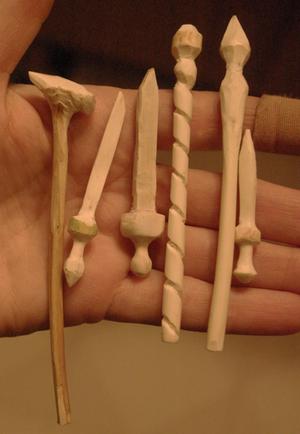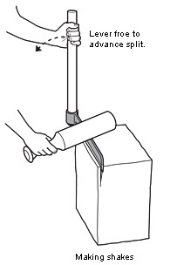
 7
7




![Filename: 19A676BC-30DA-48EB-8218-28CE26A60C8C.jpeg
Description: A froe (Wikipedia image) [Thumbnail for 19A676BC-30DA-48EB-8218-28CE26A60C8C.jpeg]](/t/119627/a/84770/19A676BC-30DA-48EB-8218-28CE26A60C8C.jpeg)
![Filename: F82C725A-B7E2-4AE4-86E8-0B1D8D68E133.jpeg
Description: Yucca filamentosa (Wikipedia image) [Thumbnail for F82C725A-B7E2-4AE4-86E8-0B1D8D68E133.jpeg]](/t/119627/a/84773/F82C725A-B7E2-4AE4-86E8-0B1D8D68E133.jpeg)
Mandrake...takes on and holds the influence
of the devil more than other herbs because of its similarity
to a human. Whence, also, a person’s desires, whether good
or evil, are stirred up through it...
-Hildegard of Bingen, Physica
 12
12





 7
7




 11
11




Ryan M Miller wrote:In order to save money on knitting supplies and as an exercise in self-sufficiency, I'd like to know what raw materials work well for making knitting needles.
.
 7
7




 4
4




Tereza Okava wrote: the only thing I have right now on my property is mulberries, Surinam cherries, or my precious baby citrus trees, but sounds like a good reason to go hunting at the park for a sprig of something.
 7
7





 8
8





 5
5




They are music wire - spring steel. They fit into cylindrical needle adapters (mostly lined with brass). Yes, at this time, my favorite sock (and hat) needles are 12" long pieces of music wire. (And by using 6 of them, I can knit a gansey for a big guy. However, by using real 18" long gansey needles (with flat ends) I can knit faster than I can with the 12" needles, so sweaters still get knit on the longer needles (now with flat ends).
Tradition is not the worship of ashes, but the preservation of fire.
 8
8




Life's too short, eat desert first! [Source of quote unknown]
You have to be warped to weave [ditto!]
 6
6




In the south when the wind gets to 75 mph they give it a name and call it a hurricane. Here we call it a mite windy...
 8
8




Mandrake...takes on and holds the influence
of the devil more than other herbs because of its similarity
to a human. Whence, also, a person’s desires, whether good
or evil, are stirred up through it...
-Hildegard of Bingen, Physica
 5
5




Best luck: satisfaction
Greatest curse, greed
 1
1




Life's too short, eat desert first! [Source of quote unknown]
You have to be warped to weave [ditto!]






 2
2




Ryan M Miller wrote:I want to resurrect this thread again because I've been learning about other plants besides river cane that have straight shafts suitable for making knitting needles. Wherever river cane wasn't available, certain species of dogwood (Cornus sp.), Viburnum, and willow (Salix sp.) were used to make arrow shafts. I just recently found out about this as of yesterday. Here's a video of Willie Pekah from the Comanche of Oklahoma making traditional arrows with dogwood branches. I expect the same dogwood species he's using would also be suitable for making knitting needles. https://www.youtube.com/watch?v=1G1Vo9GV2H8
"Also, just as you want men to do to you, do the same way to them" (Luke 6:31)

| I agree. Here's the link: http://stoves2.com |








